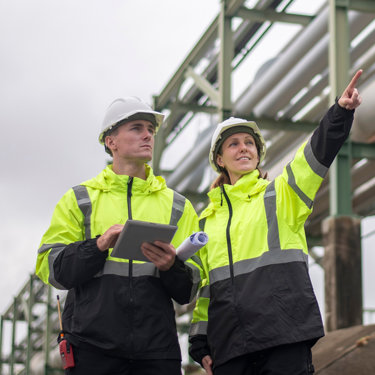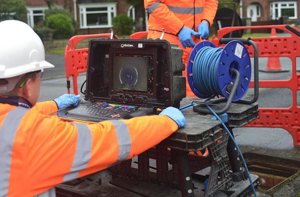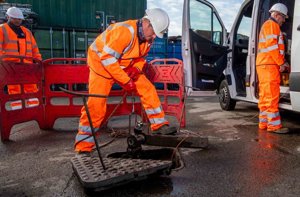
Cured-in-place pipe (CIPP) lining
Ready to discuss your project?
Please leave your details and a member of our team will reach out to discuss your requirements in more detail and arrange next steps.
Cured-in-place pipe (or CIPP) lining is a trenchless technology to repair damage and joints in pipes, drains or sewers, preventing leaks, floods and environmental damage without the disruption, expense or emissions associated with excavation.
An overview of cured-in-place pipe (CIPP) lining
Capability
Experience
Memberships
Accredited
Specialists
Range of applications
Benefits of cured-in-place pipe (CIPP) lining vs excavation
Safety
With the volume of utilities in the ground these days the risk of service strike from excavation is significantly greater. This can at best be an inconvenience for an individual or collection of houses, or at worst lead to serious injury or death to a worker.
Sustainability
The volume of waste generated from moving earth and removing and replacing pipes is significant. By remediating the existing pipework, its lifespan is significantly improved with limited waste.
Operational
Trenchless, no-dig solutions vastly reduced the operational impact to your site, meaning reduced downtime and less impact to revenue.
Budget
Aside from the reduced impact to revenue generation, trenchless, no-dig technologies are a cheaper alternative to excavation.
How does cured-in-place pipe (CIPP) lining work?
Our engineers will undertake a CCTV survey of your drains, code the defects and generate a remediation report. If lining is possible we will then line the drain and conduct a further CCTV report to confirm that the work has been effective.

Cured-in-place pipe (CIPP) lining technologies
UV lining is the fastest and most efficient type of lining and because no water is required, there is virtually no risk of environmental pollution. The sewer liner is impregnated with light-sensitive resin and a specialist UV light train is pulled back through the run to cure the resin. It can be used on pipes between 150mm and 1800mm but is restricted to straight runs.
LED lining works in the same way to UV lining, but uses a blue LED bulb rather than UV light to cure the liner. The smaller bulb means it can be used in smaller pipes and on up to 90° bends
Pressure pipe lining is designed for use in highly pressurised pipelines carrying firewater or gas, such as rising mains. Unlike other liners, our solution is self-supporting and doesn’t require curing.
The resin-impregnated liner is installed using a compressor and an inversion drum and is cured by the external temperature.
A resin-impregnated liner is inserted into the pipe and inverted through to the next manhole. The liner is filled with water, which is heated to around 85° and circulated for 4 hours until the liner is cured.
Once cool, the liner is cut to release the water so that the liner can be trimmed and any lateral connections cut.
You might also be interested in...
Environmental compliance today, creating a sustainable tomorrow
Helping you reduce risk to the environment and your operation by managing assets compliantly while achieving commercial, ESG, and net-zero goals.
Contact our experts



